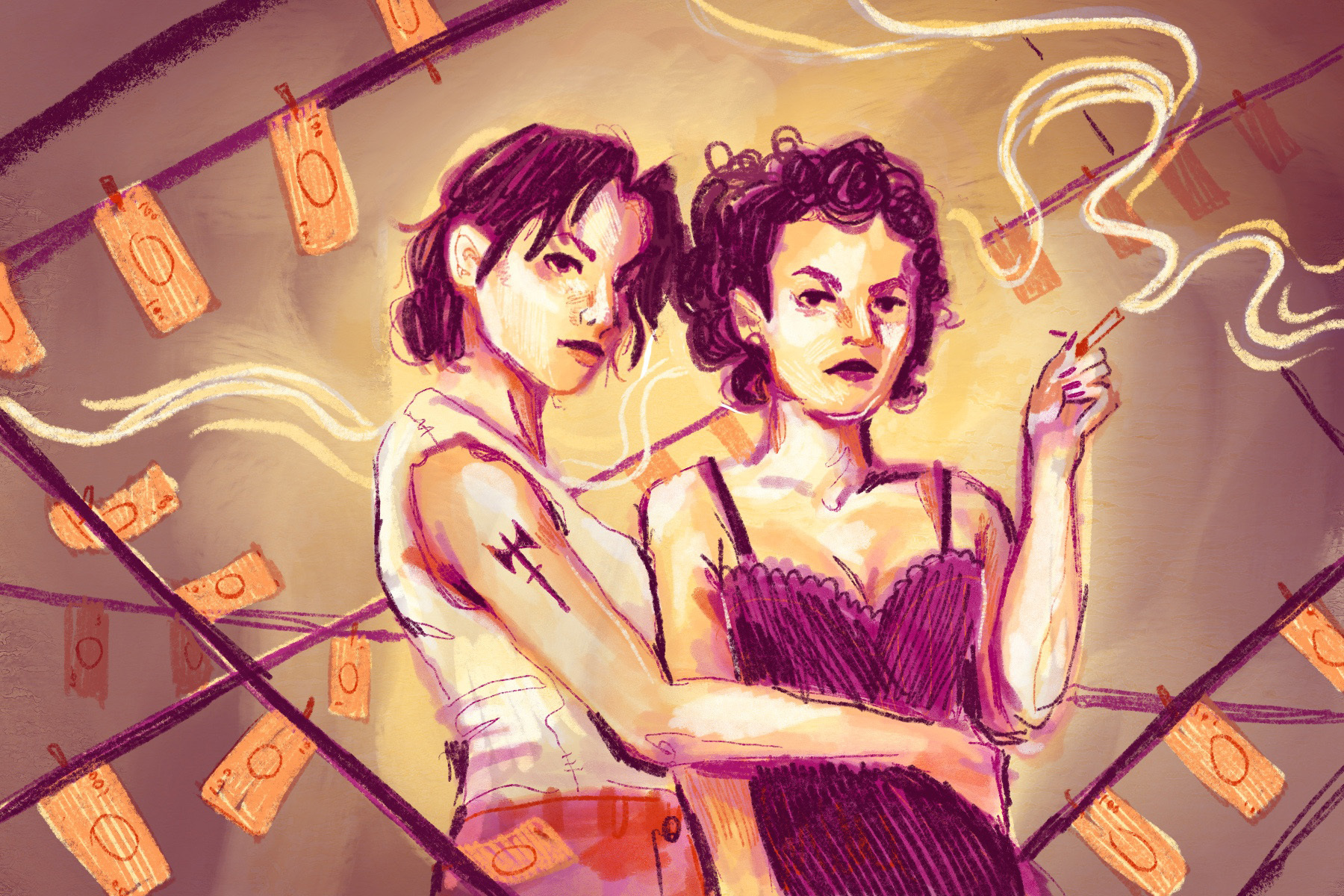Each June, the LGBTQ+ community sets out to celebrate queer identity, but sometimes it seems like the options for lesbians are limited. What little representation there is for LGBTQ+ people seems to center on white cisgender men, leaving out everyone else. While there are a few notable lesbian stories that have made their way into the mainstream, representation for lesbians often feels hollow, relying on a male fantasy and backed by the commodification of sapphic love by adult streaming sites.
This combo often leads to obviously harmful tropes like ones seen in “Cruel Intentions” or “Wild Things,” which feature women performing queerness for male pleasure, or more recent and superficially progressive films like “Blue Is the Warmest Color” and “Below Her Mouth,” where queerness is sexualized in the guise of normalization or representation.
Regardless of the intent or impact of these films, butch or masculine lesbians are often excluded, as their very existence defies the male gaze. “Bound,” released almost 25 years ago, highlights the beautiful tradition of butch and femme couples.
It has become marginally more common to find some variety of femme for femme lesbians on screen. “Booksmart,” “Portrait of a Lady on Fire,” “Ammonite” and even “Happiest Season” all feature women that are queer but feminine enough to be palatable to cis and heterosexual people who understand lesbianism through fetishization rather than queer history. However, butch and femme couples have been around as long as lesbianism itself; butch and femme are identities that date back a long time, though they gained more traction, and their current labels, around the 1940s.
The butch and femme dynamic suggests a division of care and has a deep understanding of the reality of living with a marginalized identity. Butches historically supply protection, physical service and safety to femmes, while femmes historically offer butches support, provide for them and allow them mobility in a heteronormative society by placating oppressive systems with outward displays of femininity. Butches have historically held blue-collar “men’s” jobs, or jobs that require physical strength, while femmes have sometimes used sex work to provide for themselves and their partners.
“Bound” embraces this history. The film follows Corky, a butch lesbian and ex-con, and her girlfriend Violet, a femme “dating” a member of the mob. It often features lingering shots of the couple’s hands and mouths, body parts some argue the female gaze is preoccupied with. It also presents Corky as unrelentingly butch — even when she lies alone in bed, she wears a white tank top and men’s boxers. When Violet’s abusive “boyfriend” walks in on the pair, he initially mistakes Corky for a man due to her short hair. It is, however, beyond question that Corky is not a man.
The film is written and directed by the Wachowski sisters, whose dedication toward producing a lesbian story for the sake of representation — not explicit fetishization — led them to hire Susie Bright, who is known for her sex-positive lesbian-centered work, for the film’s unapologetically gay sex scenes. These scenes emphasize the femininity of the pair’s intertwined bodies and the lack of heteronormative positioning or technique. Also, the costuming department chose to add to Violet’s height — standing in her heels, she is noticeably and notably taller than Corky.
The film also subverts the unfortunately commonplace trope of queer characters experiencing unhappy endings. “Bound” concludes with Corky and Violet riding off happily into the sunset after successfully swindling the mafia out of $2 million.
In fact, it is the pair’s sexuality that allows them to pull off the heist. None of the mob members realize that the feminine Violet is gay, which allows Corky to pull off the technical aspects of the heist, while a male partner would’ve drawn immediate attention. Corky does her portion of the heist with a strong focus on her hands and fashion choices: She picks the lock to the case holding the money and smuggles in her lock-picking tools as earrings, an accessory that still remains a form of flagging.
Obviously, as a movie made almost 25 years ago, “Bound” does have some issues. Jennifer Tilly’s vocal affectation as Violet is a very ’90s homage to the noir femme fatale and makes the movie easy to date, as does the color palette. Even at the time of release, the film was criticized for being too violent and it does require a certain strength to get through the more visceral sections. A particularly brutal bathroom scene involves shears and fingers in a way that’ll have you clenching your fists, but it’s a price worth paying since neither sapphic lead ends up sexually assaulted or dead.
Overall, “Bound” is a revolutionary film and a fun watch. It’s hard to come by media that centers on queer voices, and even harder to come by happy lesbian stories, but “Bound” checks both of those boxes and then some. It’s also just a good movie. Films that fall under the heist genre often have plots that hinge on huge missteps or idiotic characters. “Bound” doesn’t.
Up until the final moments, the characters play the heist like a game of chess, calculating each move and exploring the options of the other players. The climax, when it finally comes, once again centers on Violet’s identity, hinging on a choice she makes when underestimated. Available on both Hulu and YouTube, “Bound” is totally worth the 1 hour and 48-minute runtime, even if it’s just to see a butch lesbian have a happy ending or a femme validated in her sexuality.
















